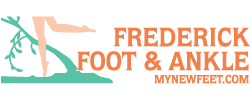Often falls happen to those with poor balance while they are mobile. At Frederick Foot & Ankle we asses all aspects of that can increase the risk of our patient’s falling. Some contributing factors to falls include; poor eyesight, medications, uneven terrain, decreased muscle strength, neuropathy, and other health issues.
The Center for Disease Control reports that one in five falls causes a serious injury such as a broken bone or head injury. For those that are looking to improve their balance and strength there are chair exercises above that should be completed daily. The exercises should be 3 sets for 12 repetitions. Always consult your doctor before starting an exercise routine.
Staying active is the best way to combat balance issues. Often a period of inactivity after an injury or surgery can be a reason to start with chair exercises. Once the chair exercises are mastered more difficult balance challenges can be added.
